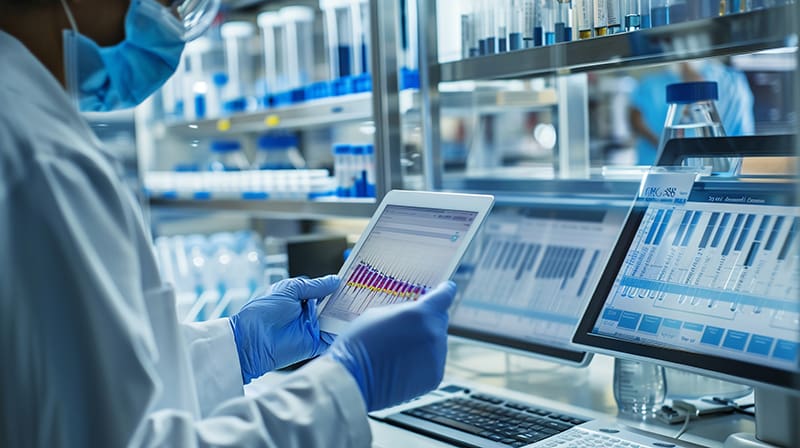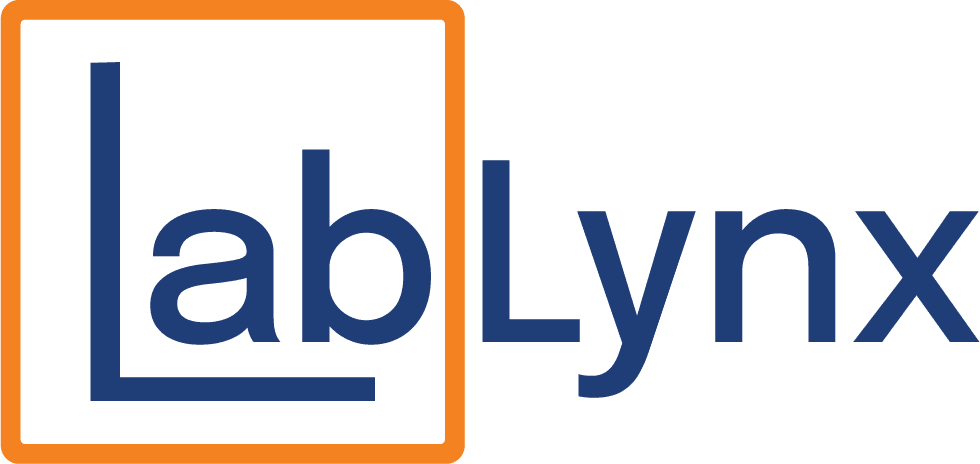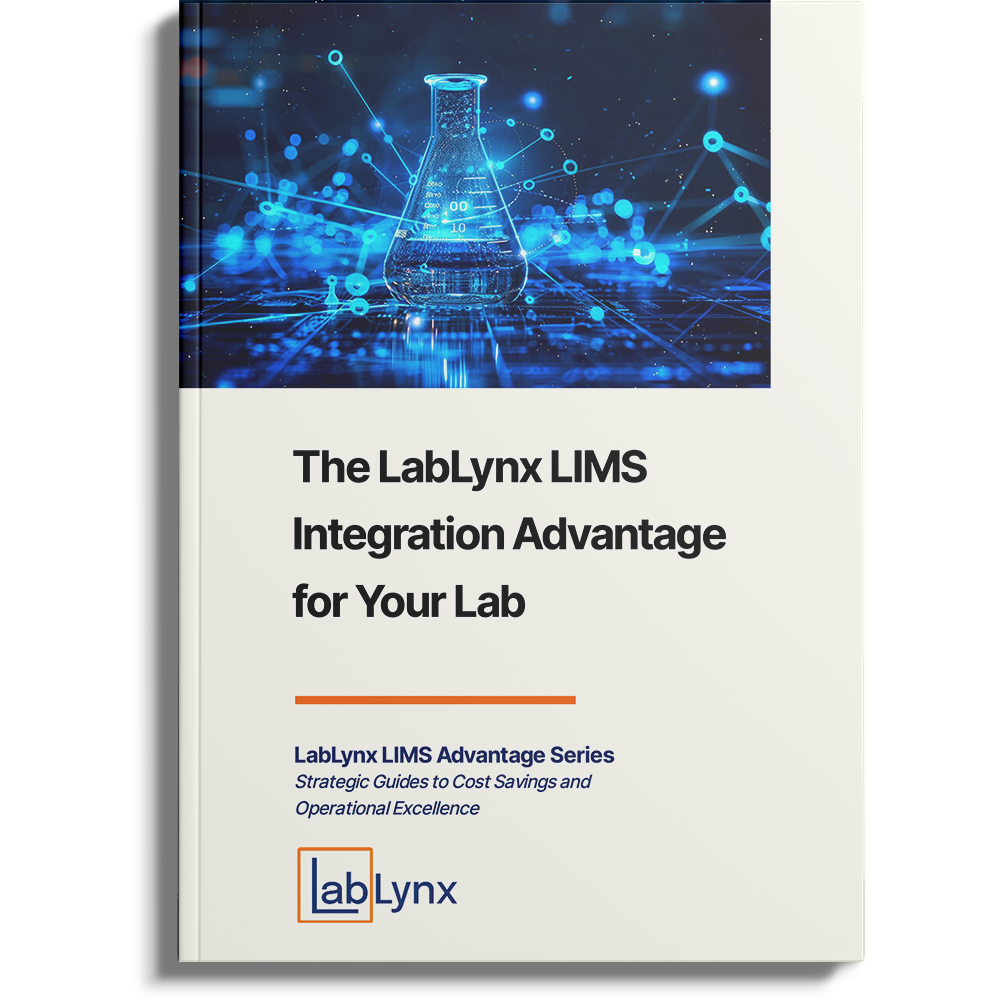
Laboratories today face the challenge of managing increasingly complex data while maintaining high standards of accuracy and compliance. The solution to these challenges often lies in the use of a Laboratory Information Management System (LIMS). But what exactly does a LIMS do, and how does it function? This article delves into the mechanics of LIMS, offering a detailed look at how it can transform your laboratory operations by streamlining processes, enhancing data management, and ensuring regulatory compliance.
What Is a LIMS?
A Laboratory Information Management System (LIMS) is a sophisticated software platform designed to manage and streamline laboratory operations. It acts as a central repository for all laboratory data, from sample tracking to data analysis and reporting. LIMS is widely used across various industries, including pharmaceuticals, biotechnology, environmental sciences, and clinical research, to improve efficiency and accuracy in laboratory workflows.
Core Components of a LIMS
Understanding how a LIMS operates involves exploring its key components, each playing a crucial role in laboratory management:
- Sample Management
The cornerstone of any LIMS is its ability to manage samples efficiently. Each sample is assigned a unique identifier upon arrival at the laboratory, allowing for precise tracking throughout its lifecycle. This ensures that every sample is properly processed and analyzed, reducing the risk of misidentification or errors. - Data Management
LIMS provides a centralized system for capturing, storing, and managing laboratory data. This data includes test results, observations, and metadata, all of which are securely stored and easily accessible for future analysis or reporting. - Workflow Automation
One of the most significant advantages of a LIMS is its ability to automate repetitive tasks. This includes data entry, calculations, and report generation, freeing up laboratory staff to focus on more complex tasks and reducing the potential for human error. - Compliance and Quality Control
In industries subject to stringent regulations, maintaining compliance is critical. A LIMS helps laboratories adhere to industry standards such as ISO, GLP, and FDA by enforcing SOPs, tracking audit trails, and ensuring data integrity. Additionally, LIMS supports quality control measures, ensuring all data meets predefined quality standards. - Reporting and Analytics
LIMS systems excel at generating detailed reports and performing data analysis. Whether you need a simple test report or a comprehensive analysis of laboratory trends, a LIMS can provide accurate, customizable reports that offer valuable insights. - Integration with Instruments and Systems
Modern laboratories use a variety of instruments and systems to conduct tests and analyze data. A LIMS can integrate with these instruments, capturing data directly and ensuring that all information is synchronized. Moreover, LIMS can integrate with other enterprise systems, such as ERP and CRM, to create a seamless operational environment.

How Does a LIMS Work in Practice?
To better grasp how a LIMS functions in a real-world setting, consider the following steps:
Sample Submission and Registration
The process begins with the submission of a sample to the laboratory. The LIMS assigns a unique identifier to the sample, which is used for tracking and management throughout the entire process. Relevant information about the sample, such as its source, type, and required tests, is recorded in the system.
Sample Tracking and Workflow Management
As the sample moves through various stages of testing, the LIMS tracks its progress. The system manages the workflow, directing the sample to the appropriate instruments and technicians. Prioritization features within the LIMS help laboratories manage workloads effectively.
Data Collection and Analysis
During testing, the LIMS captures data directly from laboratory instruments. This data is automatically logged into the system, eliminating the need for manual data entry. The LIMS then performs necessary calculations, validates the data, and stores it securely.
Quality Control and Compliance Checks
Throughout the testing process, the LIMS ensures that quality control measures are followed and that all actions comply with regulatory standards. Any issues, such as discrepancies in data or equipment malfunctions, are flagged by the system for prompt resolution.
Reporting and Results Communication
After testing is complete, the LIMS generates reports based on the collected data. These reports can be customized to meet specific requirements and are shared with relevant stakeholders, such as clients, regulatory bodies, or internal teams. The system also maintains an audit trail, documenting all actions for future reference.
Data Archiving and Retrieval
Once a sample has been processed, and results have been reported, the LIMS archives the data. This archived data is easily retrievable, enabling laboratories to perform retrospective analyses, generate trend reports, or respond to audits and inspections.
Benefits of Implementing a LIMS
The adoption of a LIMS brings numerous advantages that can significantly enhance laboratory operations:
- Increased Efficiency: By automating routine tasks and streamlining workflows, a LIMS allows laboratories to process samples more quickly and with greater precision.
- Improved Data Integrity: LIMS ensures that all data is consistently captured, stored, and managed, reducing the risk of errors and maintaining high data integrity.
- Enhanced Compliance: Built-in compliance features help laboratories adhere to regulatory requirements, reducing the risk of non-compliance and associated penalties.
- Better Decision-Making: Real-time data analysis and customizable reports provide laboratory managers with insights that support informed decision-making.
- Scalability: A LIMS is scalable, meaning it can grow with your laboratory’s needs, making it suitable for both small labs and large enterprises.
- Cost Savings: By improving efficiency and reducing errors, a LIMS can lead to significant cost savings, making it a valuable investment for any laboratory.
Choosing the Right LIMS for Your Laboratory
Selecting the best LIMS for your laboratory is a critical decision that directly impacts your lab’s efficiency, data integrity, and compliance with industry standards. LabLynx stands out as the superior choice for several reasons:
Customization and Flexibility
LabLynx LIMS is designed to be highly customizable, allowing it to seamlessly adapt to your lab’s unique workflows and processes. Unlike rigid, one-size-fits-all systems, LabLynx enables you to tailor every aspect of the platform, from sample tracking to report generation, ensuring that the system meets your specific needs.
Ease of Use
LabLynx prioritizes user experience with an intuitive interface that minimizes the learning curve for your staff. The system is built with user-friendly navigation and straightforward processes, enabling quick onboarding and reducing downtime during transitions.
Integration Capabilities
LabLynx excels in its ability to integrate with a wide range of laboratory instruments and enterprise systems. Whether you’re working with legacy equipment or the latest technology, LabLynx offers robust integration tools that ensure smooth data exchange, enhancing operational efficiency.
Vendor Support
LabLynx is known for its exceptional customer support, offering reliable assistance and regular system updates. With a dedicated support team and a strong reputation in the industry, LabLynx ensures that your system remains up-to-date and that you have expert help whenever needed.
Cost and ROI
LabLynx offers a cost-effective solution that delivers significant return on investment. The total cost of ownership, including implementation, training, and ongoing maintenance, is balanced against the system’s ability to enhance productivity, reduce errors, and streamline compliance—ultimately leading to long-term savings.
Conclusion
Implementing a Laboratory Information Management System (LIMS) is a transformative step for any laboratory aiming to optimize operations, improve data accuracy, and ensure regulatory compliance. LabLynx is not just a LIMS provider; it’s a partner dedicated to helping you achieve these goals.
LabLynx offers specialized LIMS solutions tailored to meet the unique demands of your laboratory. With its emphasis on customization, ease of use, seamless integration, and outstanding support, LabLynx stands out as the best option for laboratories seeking to enhance their performance and achieve long-term success. Contact us today to learn more about how LabLynx can revolutionize your laboratory operations and help you reach new heights.




